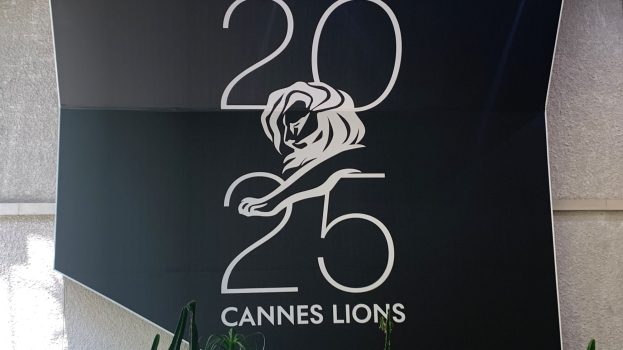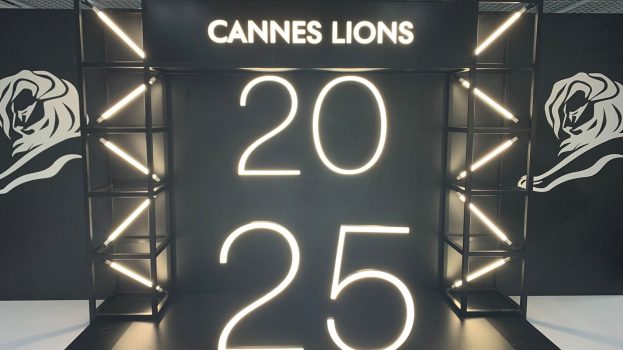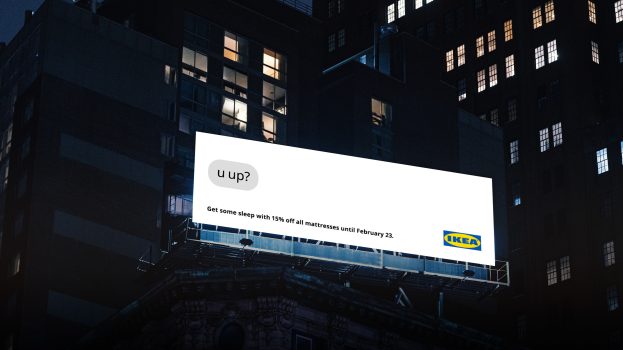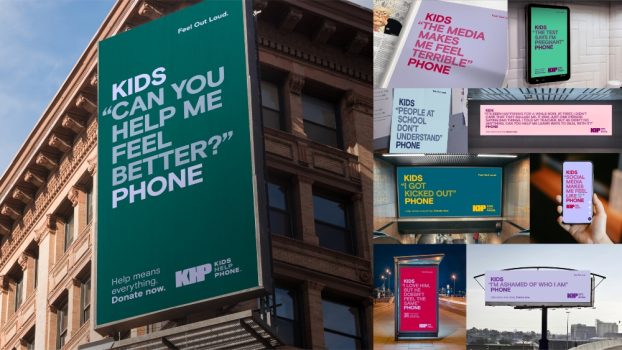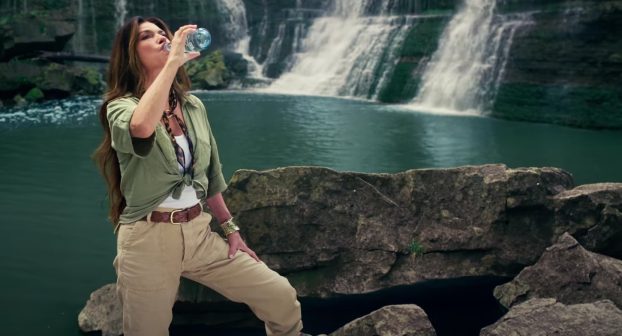Not all sponsorships are created equal. Depending on a company’s objectives, there are countless ways marketers can milk their participation to fulfill whatever objective a company has set – from the most basic goal of building brand equity to the more complex goal of personal interaction with prospective customers.
Thanks to the growing sophistication and accountability of both property sellers and buyers, sponsorships have moved from simple image transference exercises into strategic programs set on building brands, interacting with customers and making sales.
Take the Pontiac GMC Cup. Created 30 years ago, the alpine ski race series was a national effort to fill the gap in amateur regional racing in this country – and an ideal way for the car brand to link itself to the popular winter sport. The program was dropped for a time in the early ’80s, but when it relaunched three years ago, it was a much more sophisticated beast.
‘Today, we have a fairly well-rounded ‘own the snow’ strategy,’ says Tom Laurie, manager of promotions, sponsorships and events at GM Canada. While the event’s centrepiece – the races held at several mountain resorts across Canada – has remained the same, the program has become much more comprehensive, he says. Beyond the traditional TV coverage (Pontiac World of Skiing and various promotional spots), on-site signage, vehicle displays and the like, the program now includes extensive public relations efforts, partnerships with three resorts, a Web site and, perhaps most significantly, enhanced on-the-hill activities, says Laurie. These days, customers and prospects are invited – with free or discount lift tickets – to special ski days, where they may enjoy preferred parking, special races, free snacks from on-site hospitality tents, prize giveaways and the opportunity to test drive one of the company’s sport utility vehicles.
Welcome to the new model of milking sponsorships. ‘Sponsorship, as we have known it for the past 25 years, is more or less dead – or it should be,’ says Rick Janes, president of MacLaren Momentum, the sponsorship and event marketing division with GM agency MacLaren McCann in Toronto.
Janes says that the marketing community’s approach to sponsorship and event marketing has seen several shifts over the past few decades. The sponsorships of the ’70s were driven by emotion – this was the decade when many sponsorship decisions were made based on the personal tastes of the CEO. In the ’80s, this changed – companies were more accountable for their sponsorship choices and events and sponsorships were considered a critical part of the marketing mix. This sponsorship model focused mainly on building awareness. It was all about image transference, says Janes.
The ’90s saw a marked movement towards leveraging sponsorships. Creating overlays – through advertising, on-site activities, public relations and the like – became key to squeezing the optimum value out of a sponsorship.
Today, we’re starting to see the next generation of sponsorship, Janes says. ‘Right now, it’s not just about event marketing but experiential marketing.’ Experiential marketing is all about creating unique experiences based on the customer’s needs and interests, he says. So when GM decided to launch the Cadillac Lifestyles event, it invited prospects to a day of golf, including a one-hour lesson with a pro – and gave customers the use of a Cadillac for the day, according to Janes.
Other car companies are also moving towards sponsorships designed to create ongoing relationships, rather than just heighten brand awareness. Daimler Chrysler’s involvement with Nations Cup, for example, no longer simply involves just signage, car displays and six hours of prime-time programming with commercials, according to Michael Merrall, senior vice-president and managing director of Toronto-based sports marketer IMG Canada.
‘It’s not enough for consumers to look at our cars – they have to interact with them,’ he says. Enter the Chrysler Proving Grounds, a three-day event allowing about 200 people to drive vehicles from the manufacturer’s lineup in a course designed to test their driving prowess. Another part of the program lures prospects to a women’s golf tournament with free tickets and a $250 discount off the price of a Chrysler car.
According to Merrall, the discount led to the sale of 77 cars, a measurable return on investment. The average sponsorship reveals only how many people saw the ads or car displays, he points out.
Such add-ons make for more satisfying programs for marketers, but they also create challenges for event organizers, says Merrall. Staying in tune with the increased expectations of today’s marketers isn’t easy, particularly for smaller properties, he says.
That’s not to say that smaller properties can’t make things work to the sponsor’s advantage, says Mark Harrison, president of Trojan Sports & Event Marketing in Toronto. In fact, sometimes it makes more sense to go small – and extensive – than big and minimal.
‘You often see somebody who says: ‘I’ve got a budget of $100,000 and I’ll spend 90% of it on rights fees,” he says. ‘But they should be spending about 20% of it on rights frees and 80% on other activities.’
In fact, Harrison says that the rule-of-thumb ratio for spending on non-televised events should be three-to-one. In other words, for every dollar spent on securing the rights, $3 should be spent to promote the event. For televised events, Trojan recommends a five-to-one ratio, he says.
Harrison says that sponsors of smaller events have to use tricks of the trade gleaned from larger events in order to optimize their investment. For instance, if a company decides to sponsor minor hockey, then it should look at smaller-scale versions of what NHL sponsors are doing to promote their involvement.
The number one recommendation Harrison has for boosting a sponsor’s return on investment is to focus on media relations. ‘We tend to practice an approach that says ‘pre-sell,” he says.
One project Trojan worked on for several years running was the Reebok Invitational, a national amateur basketball event in Hamilton, Ont. Rather than simply fire off faxes letting media outlets know that the event was taking place, Trojan created a 24-hour media centre. It hired journalism students to file radio pieces on the event to 20 smaller communities across Canada (taking care to make the stories relevant to communities which had players at the event). Trojan also hired a private production house to create video news releases and had writers filing print stories to editors who were alerted to the event weeks beforehand. ‘We ended up getting a three-to-one return [in terms of media coverage] for Reebok,’ he says.
Harrison also suggests that marketers consider a trade program, if it’s relevant to their needs. Volunteers and local businesses might be rich with information and opportunities – it could be simply a matter of hooking up these contacts, he says.
Such events are also a prime opportunity for market research, but it’s important to be creative when collecting information, warns Harrison, otherwise you risk turning off customers. Providing prospects with access to something they couldn’t normally get – such as the chance to meet a favourite athlete – is the best way to ensure you get what you need for your database.
Rob Segal, founder of Segal Communications in Toronto, is best known for the annual youth-targeted Skate Space events (he’ll also be kicking off a new Urban Avalanche event in Montreal and Toronto this April). He believes that on-site presence is important, but adds that it’s critical to create something that will drive customers back to the retail channel.
Major sponsor Sony PlayStation, for example, features consoles and games for attendees to play at this July and August’s Skate Space events – yet it’s also working with a key retailer to bounce people back to the stores after the events are over, says Segal.
While signage is a good brand-builder, it’s things like telecast features and contests that make a partner stand out, he says. ‘We have to create one-to-one relationships with consumers at the events themselves – you want to do something more than just throw up a logo.’
Also in this report:
– Sponsors mix in grassroots to offset shooting stars p.B1
– The right match: Sponsors reveal the strategy behind the sponsorship p.B4
– Edgy SnowJob helps sponsors reach youth: MuchMusic’s venerable mountain-top concerts take sponsorship to new heights p.B8
– Beyond signage: Using equity to make your sponsorship soar p.B9

